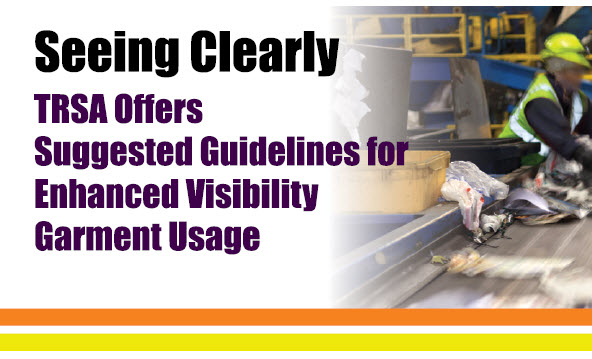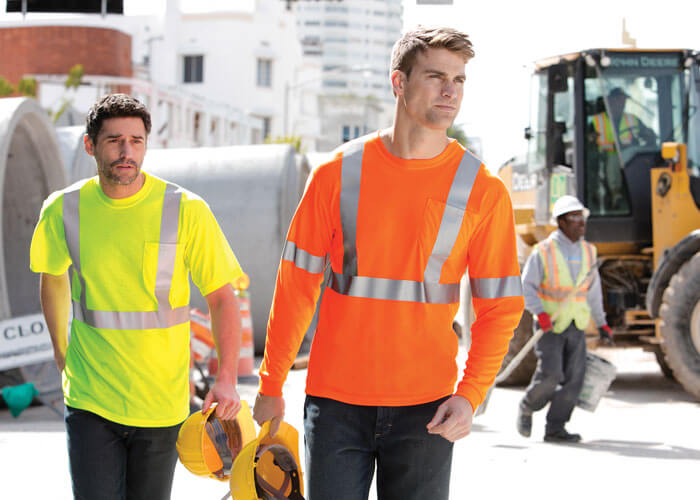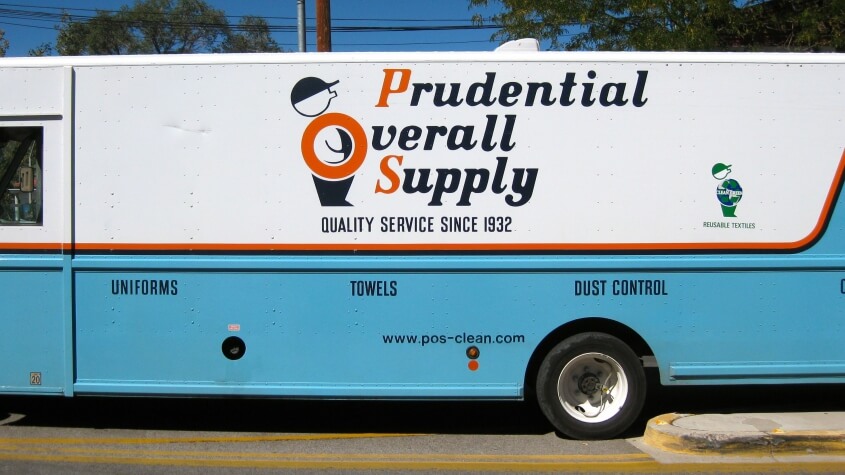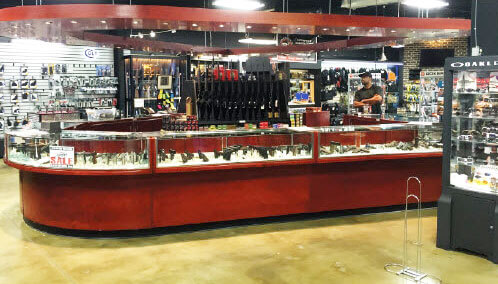
By Kevine Schwalb
An employee who works in a street or highway right-of-way and is exposed to traffic or construction equipment must wear a highly visible upper-body garment to comply with regulations such as the Occupational Safety and Health Act of 1970 in the United States. Emergency responders and law enforcement officers also must wear high-visibility apparel after an emergency has passed and they’re doing traffic control, cleanup, investigations or similar tasks.
High-visibility apparel usually isn’t required for workers such as parking lot attendants and warehouse staff who don’t have street or highway exposure.
However, wearing the garment makes them more visible. Employers should assess their employees’ risk of exposure and decide if additional protection is needed.
Many commercial laundry operators offer high-visibility garments to clients who are required to have their employees wear these garments by law due to the nature of their jobs. Requirements for high-visibility garments are laid out by several standards such as ANSI/ISEA 107-2010, which sets the performance criteria for high-visibility apparel.
 Often the use of high-visibility clothing is cost prohibitive. That’s why it isn’t used in settings where it would be beneficial but isn’t required. This includes workplaces such as indoor manufacturing, garbage dumps and other scenarios involving large machinery and workers. This is where an enhanced-visibility garment would increase employee safety.
Often the use of high-visibility clothing is cost prohibitive. That’s why it isn’t used in settings where it would be beneficial but isn’t required. This includes workplaces such as indoor manufacturing, garbage dumps and other scenarios involving large machinery and workers. This is where an enhanced-visibility garment would increase employee safety.
To develop some certainty and continuity and more clearly define what an enhanced-visibility garment design could look like, TRSA created industry guidelines to help companies specify uniforms that provide additional visibility for employees needing clothing in workplaces where high-visibility PPE isn’t mandatory, but where enhanced visibility would be advantageous. These enhanced-visibility industry guidelines will provide direction on how to improve both daytime and nighttime visibility of employees by describing clothing in terms of color and suggested placement of retroreflective striping (material that reflects and returns a relatively high proportion of light in a direction close to the direction from which it came). The guidelines will be issued shortly.
Workplace environments that require employees to work around low-speed heavy equipment in low light or among obstructions are well-suited for clothing that provides an extra measure of visibility for employees. Good examples include factory floors, manufacturing facilities, landfills and mines. Even the local lumberyard, where some employees are operating forklifts while others are walking among stock, would be a candidate for these enhanced-visibility guidelines.
Garments described as providing enhanced visibility generally provide some measure of daytime visibility, perhaps by being fluorescent in color, and/or nighttime visibility, through the use of retroreflective striping but at levels below those required by ANSI/ISEA 107-2010. Enhanced-visibility garments work best if their high-visibility materials conform to ANSI/ISEA 107 photometric requirements.
 Enhanced visibility clothing is NOT a substitute for compliant high-visibility clothing required in areas where workers are exposed to roadway hazards, as mandated by the Manual on Uniform Traffic Control Devices, Federal Highway Administration, 2009. For circumstances where high-visibility workwear is required, U.S. launderers should refer to the MUTCD and ANSI/ISEA 107-2010 (American National Standard for High-Visibility Safety Apparel and Headwear) for applicable high-visibility standard requirements. Operations in other countries should refer to local or national regulatory mandates.
Enhanced visibility clothing is NOT a substitute for compliant high-visibility clothing required in areas where workers are exposed to roadway hazards, as mandated by the Manual on Uniform Traffic Control Devices, Federal Highway Administration, 2009. For circumstances where high-visibility workwear is required, U.S. launderers should refer to the MUTCD and ANSI/ISEA 107-2010 (American National Standard for High-Visibility Safety Apparel and Headwear) for applicable high-visibility standard requirements. Operations in other countries should refer to local or national regulatory mandates.
TRSA developed its new guidelines with input from its Enhanced Visibility Task Force. By providing performance requirements for conspicuous materials in garments, task force members are confident the guidelines will ultimately enhance the visibility and safety of a wider range of employees who are not at high risk but in enough jeopardy to make such protection cost effective.
Kevin Schwalb is TRSA’s vice president of Government Relations and staff liaison to TRSA’s Enhanced Visibility Task Force. He can be reached at [email protected], (703)519-0029, ext. 107.













